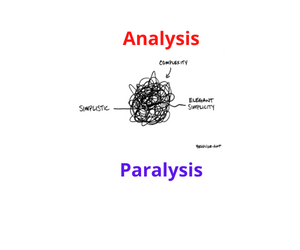Who should pay? What is my allocation and why? This is a really difficult topic. Firstly, because although it is about numbers it is not about math, there is not an absolutely right answer. Secondly, because it is pretty much unheard of to have a situation of harmony and contentment around this.
Banking generally and Investment Banking specifically are very expensive businesses to be in. Part of that is of course salaries and bonuses, perhaps less so than in the past, however this is not the forum to wax lyrical on that one. Actually operating a bank is very expensive; there is a lot of plumbing to pay for irrespective of the day’s P&L.
An analogy with the music business may give a better feel for this. Big name bands have big tours with big stages. U2 are as big as they come. I read a comment by their manager, Paul McGuiness, that every day on the road costs $700’000 irrespective of whether they actually play a gig or not. Lights, sound, stage crew and trucks, as well as accommodation. As it is in the music business, so it is in banking: buildings, IT systems, bank accounts and balances, securities at the bank. Although by all accounts there are a lot of bean counter types involved in the business these days, U2 have it pretty easy; one business, one product line. Add up the revenues, subtract the costs and you have the profit. Nothing is really “shared”.
In banking, large swathes of cost are shared. Those shared costs are most often in “cost centres” which need to allocate their costs out on a not for profit basis to “profit centres”. Depending on the institution and the complexity of who shares what, that task might be accomplished by the cost centre owner defining an allocation key, or at the more complex end by an SLA, a Service Level Agreement. Largely this is a euphemism for cost allocation agreement, as it it far more about who pays what then about the exact service.
My first lesson in the pitfalls of cost allocations, or more precisely justifying them, came in the hallowed halls of God’s London headquarters; the Goldman Sachs offices on Fleet Street. I had just taken over responsibility for all of the Swiss securities operations. Our small unit in Switzerland did everything in matters Swiss, and we were a cost centre, so our costs had to be allocated out to one or more profit centres. One of those was the Japanese Warrant desk, headed at the time by a really dynamic duo: Peter Savitz and Zach Cobrinik. These two had the most disciplined desk, often made up of ex Ops folks. In the heydays of the warrant market at the turn of the nineties, these two were making lots of money, both on their way to making partner. The two were almost like twins; short by name and short by nature. Both of them not much over five foot and change tall and both ran their books short a lot of the time. Almost as soon as I had taken over the operations role, I was summoned to London by Peter . He wanted to talk about cost allocations. At this point, all I knew was what I had so recently inherited from my predecessor. Well I dutifully found my way to London and onto the trading floor. Peter was a typical trader, always wanting to be at the desk and in charge of his flock. Meetings were standing affairs at the desk, where he had one and one ear on the dealer boards and the phones. Even in mid-conversation he would break off to yell at his team if the phone rang for the third time. He was all detail and discipline, and quite successful with it too. He asked me to explain the allocation methodology, which I duly did, telling him it was based on a simple trade count; add up the trades done by each desk, charge that desk based on their percentage share of all the trades.
“Trade count huh?” Yelled Peter so loudly that I swear the whole desk looked our way. ”Are my desks trades not low touch to handle, less so than those from other desks?”
“Err, yes Peter your trades are clean, but right now we allocate on trade count”
“So you mean to tell me that my trades cost the same as the ones booked that Frenchman over there in equities?” he retorted, wildly gesticulating at the equities desk run by Xavier Rolet, who went on to many achievements, and is most recently the CEO of the London Stick Exchange, “Your allocation process is so fucked up you might just as well charge me based on the number of Jews I have in the department!” Now the whole of the desk was looking at me. Right then, even though I had a head and shoulders on Peter in terms of height, I was feeling about tow inches tall. There was nothing to say. Totally humiliated, I mumbled something about looking into it and coming back to him. I traipsed off the trading floor, shoulders slumped down, and returned to the Operations area, well away from the scene of my humbling.
He was right! There were two different possible views of the activity; if you counted the trades from his particular desk, that was indeed a high percentage of the activity. Taking a view of what the team members were doing, the actual time spent on his desks business was indeed a lower share of the total. Now people are pretty much the big cost, and actually drive all those costs that are allocated in to a department; rent, building services, even HR. I ended up re-working the allocation key based on a principal we had coined in my Salomon days; Operational Effort Factor. Basically, what were we doing for whom. This was a little more advanced than the version 1.0 we had at Salomon; there we started by allowing that a team that covered repos, repurchase transactions, was actually processing two trades for every ticket, since there was a near side and a far side. This was in response to a rather simple gripe: “You lot in repo don’t process as many tickets per head as the folks in regular bond settlements!”
Lessons Learned: Don’t try and BS a trader. They have the natural instincts of a predator and they will pounce on any weakness, perceived or actual. Call it the law of the jungle, but that is a healthy ecosystem; the weak get punished by the strong. Leads to stronger players all round. On a more serious long-term note, beware of the simple; ensure that the measurement you use genuinely has some connection between the use of the resources and drivers of that usage. At the very simplest level, think about that holy of holies, Straight Through Processing. Quite likely, the work in your team is 80:20 exception processing to STP oversight. In other words, only 20% of the time is needed to supervise the throughput of the trades that you do not need to touch. Your cost model needs to reflect this.
My personal take on this is best outlined by a few principals. As a one time student of economics, with a little deference to Adam Smith, let us call these the Canons of Cost Allocations. I’ll summarise them here and look at them in more detail over the coming posts.
Effort based: Not all transactions are equal. In banking, we live in a world of straight through processing and exception processing. The people cost has to reflect this.
Encourage the right behaviour: The Swiss have a wonderful term that does the absolutely best job of capturing the essence of cost allocation. “Verursachergrechtes Pricing” Based on the principal of who caused the costs. Your cost allocation key must support this, or else trading desks will do things that are in their narrow self-interest, but not in those of the bank.
Pragmatic: It should not cost much to properly allocate the costs. If there is a major exercise, with lots of Excel and multiple days of effort, then whilst that might be effective, it is not efficient. And, there needs to be some common sense; if two entities need to use a reconciliation tool, then irrespective of volume, both should pay something. More on this in future posts.
Transparent: The person carrying the costs should be readily able to identify them in his cost accounting reports. They should be easily understandable.
Share on:




I can picture that conversation as though it was yesterday.
— Zach Cobrinik